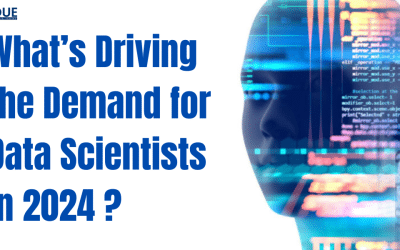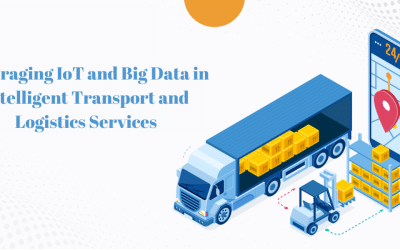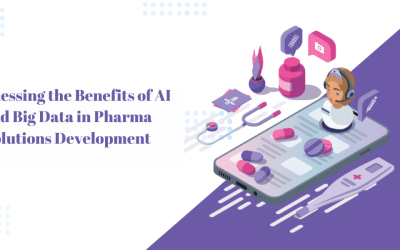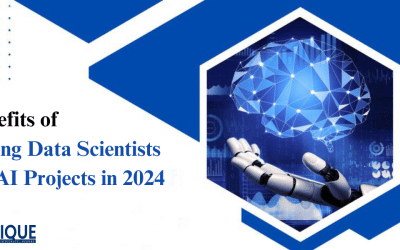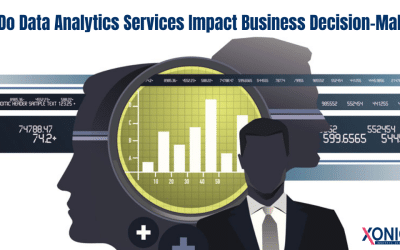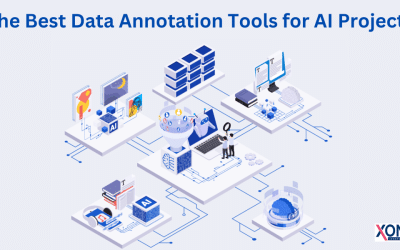As we near 2024, data annotation and computer vision have become increasingly significant. As technology expands its abilities to AI, meeting demand for high-quality and precise annotations becomes increasingly crucial due to the ever-increasing amount of data required, both variety-wise and complexity-wise. As a result, data annotation remains a vital subject that constantly develops.
As soon as you embark on an AI/ML project, finding high-quality training data becomes one of the key challenges of your work. Your AI/ML models only produce accurate results if their models were trained on accurate information gathered through data annotation services; accordingly, data labeling services that offer accurate annotation services must also help your business AI initiatives. Each business executive must consider these factors when creating plans and schedules for AI/ML initiatives.
No matter where you stand with data annotation, this post offers invaluable insight. Staying abreast of recent developments ensures you remain competitive.
Defining Data Annotation
Data annotation consists of identifying data using appropriate tags to make it more accessible for computers to read and understand. The data could comprise text, pictures, text, or video. In all cases, those who do data annotation must be able to label it as precisely as they can. The data annotation process can either be accomplished manually or automatically using sophisticated machine-learning algorithms and tools. Discover more about automated data annotation.
Annotation of text data, for example, can bridge the gap between the unstructured text and information that a machine-learning model has been trained to draw from it. Labels and annotations give crucial information needed for machines to grasp the meaning and importance of data. Each label that is assigned to data needs to be in line with the overall purposes and goals of the project. Machine learning applications (ML) and NLP models within the domain of data annotation can be extensive and span a variety of industries, from healthcare and Finance to Legal and Supply chain.
Why Does Data Annotation Service Matters?
The effectiveness of any machine learning system or AI machine learning or AI system largely depends on the quality and amount of the data supplied to the algorithm. Annotation services for data or labeling can create high-quality training data, which allows the machines to improve and learn from their efficiency. The reason why Data Annotations is essential:
Enables The Building Of AI Models
High-quality training data is the basis on which AI models are constructed. With clean, accurate, and unbiased information, no matter how powerful the computer, it can build a precise ML model.
Improves Accuracy
Annotated and properly curated datasets avoid issues such as overfitting and allow ML models such as computer vision and NLP to be more adaptable to new information. This enhances their predictive accuracy dramatically.
Reduces Bias
Training data that is biased or inaccurate could lead AI algorithms to make unjust or unethical choices. Removing bias through meticulous data collection and annotation will ensure more reliable ML models.
Saves Time & Resources
Internal AI development requires a considerable resource expenditure. Outsourcing high-quality annotation data to skilled companies can speed up model development with lower expenses.
Future-Proofs AI Systems
Quality high-end training data creates a robust, versatile, adaptable, and flexible model for machine learning that can keep in good shape by incorporating new information. Data AI annotation converts raw, unstructured data into valid labeled data, directly facilitating our incredible AI advancements.
Why Use Data Annotation Tools?
Tools for data annotation offer various advantages to businesses and companies engaged in machine learning and AI projects. They revolutionize the labeling procedure, cutting down the time spent on annotation, improving accuracy, reducing human errors, and ensuring data quality. Ultimately making it possible to scale, and providing flexibility in integrating current software.
Businesses can significantly reduce the time and energy needed to label their data by utilizing software for data annotation. The manual annotation process is time-consuming and susceptible to mistakes, while software tools for annotation speed up the process and allow it to speed up and improve labeling efficiency. This dramatically reduces the total duration and resources needed for data preparation. This will enable firms to boost the AI creation process and deploy machine learning models faster.
Furthermore, these tools increase accuracy while limiting human errors. They typically provide automated labeling options, ensuring accurate and consistent data annotation. By reducing human involvement in the process, the possibility of errors or inconsistencies based on subjective perception can be significantly reduced, which leads to better-quality training data and, ultimately, more precise AI models.
Quality assurance is an additional important component of data annotation, and tools for annotation excel in this regard. As they provide an exhaustive view of a dataset, effectively notifying every significant piece of information, they offer an insightful snapshot into every facet. It ensures that the data is accurate and complete, reducing the chance of bias or biased outcomes in AI models developed based on annotated datasets. Quality assurance systems integrated by Data Annotation Company into tools to create data annotation ensure the accuracy of labeled data, eventually leading to higher AI systems performance.
And More
Tools for data annotation also provide the ability to scale, which allows businesses to deal with more extensive and complex data sets. They are made to manage large amounts of data promptly, allowing businesses to process and annotate vast quantities of information without losing accuracy or speed. With the increasing number of datasets in both complexity and size, the ability to scale is crucial for data annotation software. These tools can help organizations handle this increase effectively.
In addition, the tools to create data annotation allow for the flexibility of integrating existing databases and software. They’re designed to connect to databases easily, data management platforms, APIs, and machine learning platforms, allowing for seamless collaboration between annotation tools and the current infrastructure. This integration feature ensures that annotation data can be easily used and accessed in other elements of the AI system, allowing efficient training of models and deployment.
Tools for data annotation offer essential advantages to businesses that want to leverage the power of AI and machine learning. They can reduce the time needed to make annotations and improve accuracy while minimizing human error, providing high-quality assurance, allowing the ability to scale, and providing various integration options. They enable companies to increase the value of the data they label to create more accurate and reliable AI models.
Features For Data Annotation And Data Labeling Tools
The tools used to create annotations on data are vital aspects that can decide the fate of your AI project’s success. Data accuracy only matters if you want accurate outputs and results. The software tools for data annotation that you utilize to build your AI modules greatly influence the outputs you produce.
As with other tools, data annotation tools offer various options and functions. This list provides several essential characteristics you must look for in annotation software to give you an overview of the available features.
Dataset Management
The tool for data annotation you plan to employ will need to support the data you already have and permit you to load these into the program to label them. Thus, managing your databases is a primary function that this software offers. Modern tools provide functions that allow you to import large amounts of data seamlessly while helping you manage your data with actions like creating clones m, emerging, soothers, and many others. The next step is to export the files into usable format. The software will enable you to save your data according to the format you have specified so that they can be fed into the ML modules you use.
Annotation Techniques
That’s what an annotation tool was created or intended to do. An effective tool will give users a variety of methods for annotation on datasets of any kind. That is unless you create an individual solution to meet your needs. The tool you choose should allow you to add annotations to images or videos using computers with computer vision. It should also be able to annotate audio files or texts taken from NLPs and transcriptions, as well as much further. Further, it would help if you bind boxes and cuboids for semantic segmentation interpolation, sentiment analysis, parts of speech, Coreference Solutions, and many more.
For those unfamiliar with AI-powered data annotation tools, they exist, too. These tools have AI modules that autonomously learn annotation patterns and automatically add annotations to photos or texts. These modules can offer incredible support for annotators, improve annotations, and even perform quality assurance.
Data Quality Control
Regarding quality checks, various data annotation tools are available with quality checks. This lets annotationists collaborate more closely with colleagues and improves workflow. By using this feature, annotations can track and mark comments or feedback in real-time, track who is behind the individuals who alter the files, restore earlier versions, and many other features.
Security
Because you’re dealing with sensitive data, security must be given the most importance. There could be sensitive data, such as those involving private information and intellectual property. Therefore, the tool you choose must ensure that your data is secure regarding where info is saved and how it’s distributed. The tool should include tools to restrict access to team members to prevent downloads that are not authorized and much more. In addition, security protocols and standards must also be adhered to and implemented.
Workforce Management
Data annotation tools are an additional project management tool that allows tasks to be delegated to team members, collaboration tasks to be completed, reviews to be feasible, and so on. Your chosen tool should be integrated into your workflow procedure to maximize efficiency. Additionally, your tool should provide a low time to learn since defining data in and of itself can take time and effort. This isn’t a good reason for taking too long to get the software. Therefore, it must be simple and easy for everyone to begin fast.
Key Challenges In Data Annotation For AI Success
The annotation of data plays an essential contribution to the design as well as the accuracy of AI and machine-learning models. But, it comes with many challenges:
Costs Associated With Notating The Data
Data annotation is possible in a manual or automated manner. The manual annotation process requires considerable work, time, and money, which could cause increased expenses. To ensure the integrity of the information throughout the process can also add to the cost.
Annotation Accuracy
Human errors in annotations could result in poor-quality data. This directly impacts the accuracy and performance of AI/ML algorithms. A study shows that quality data can cost businesses 15 percent of their income.
Scalability
When the amount of data increases, an annotation process may become more complicated and lengthy. Scaling annotation to data while maintaining quality and efficacy is challenging for many companies.
Privacy And Security Of Your Data
The annotation of sensitive information, including personal information like medical records or financial information, can raise issues regarding privacy and security. Ensuring that annotation processes comply with applicable data protection laws and ethical guidelines is vital to avoid reputational and legal risk.
Managing Diverse Data Types
Processing various kinds of data, such as audio, text, images, and video, is complicated, particularly when different methods of annotation and knowledge are needed. Coordinating and managing the annotation process for the various data types can be complex and time-consuming.
Organizations can understand and overcome these issues to overcome the challenges that arise from data annotation. Also, increase the effectiveness and efficiency of their AI and machine learning initiatives.
The Best Practices For Annotation Of Data
To ensure the successful development of your AI or machine learning-related project, you must use the most effective practices in data annotation. These techniques can enhance the reliability and accuracy of the data you have annotated:
Choose The Right Annotation Tools
Using the correct annotation interfaces and tools for labeling can speed up and improve annotation. Data annotation tools with high-end features, such as collaboration and visualizing data metrics for QA, are preferred.
Create Detailed Guidelines & Samples
Labeling and labeling requirements that are clear on data types and attributes that should be captured edge cases, format guidelines to avoid confusion and contradictions. Annotated samples of data can also aid the new annotators of data.
Focus On Human-Centric Annotation
Even though semi-automated systems help, humans are essential for providing precise judgment when dealing with complex annotation assignments. Experts in annotation or subject matter create superior training data.
Combining Machine And Human Efforts
Utilize a human-in-the-loop approach using software for data annotation to assist humans in focusing their attention on the most challenging situations. It also increases the variety of the data set used for training.
Monitor And Enforce Quality
Regular QA tests with statistical sampling and consolidating annotator feedback to ensure reliable, high-quality data.
Ensure Annotator Skills & Diversity
The group’s educational background, skills in linguistics, and geographical variety minimize the influence of unconscious biases while allowing for different interpretations of the data.
Update Guidelines Frequently
Continuous model assessments provide feedback on training datasets that require revision. This lets annotation guidelines be updated to reflect the latest developments.
Secure Sensitive Data
They anonymize PII by encrypting communications channels and restricting access to sensitive information, including medical records, during annotation.
Adopt Agile Workflows
Flexible project planning and agile workflows enable seamless pivots when data demands proliferate in brand-new, untested AI applications.
Make Sure You Follow Compliance
When noting sensitive data files, such as images of patients or medical records, you should carefully consider ethics and privacy concerns. Please comply with local regulations to protect your business’s reputation.
Future Trends Of Data Annotation In 2024
Let’s examine the forecast developments in data annotation.
The Evolution Of Data Annotation In Computer Vision
Data annotation is a significant factor in computer vision. The past year has witnessed several technological advancements in the field through innovative methods and cutting-edge technology. These advances are not just making annotation more precise and efficient; they’re also creating new workflows for computer vision engineers.
Automated And AI-Powered Annotation Solutions
AI is becoming increasingly utilized in data annotation software. Recent research shows that artificial intelligence-powered annotation tools will decrease the time needed to manually add annotations by as much as 50% while improving precision. This is crucial to dealing with the growing data sets that advanced computer vision software requires.
Machine Learning For Better Quality
Machine learning methods are now utilized to enhance the annotation process. They can be trained by earlier annotations, improving the speed and quality of annotation as time passes. This can be particularly useful when complex situations require accuracy.
Growth Of Specialized Data Annotation Services
Companies are seeking services that offer high-quality and domain-specific annotations in addition to quantity. Demand for more accurate and nuanced information in fields such as medical imaging or autonomous vehicles is driving this growth.
Conclusion
Since AI will soon transform all industries, using the entire data process to create annotations has enabled this transformation. Data annotations do not just fuel innovations, but they also help ensure that AI machines are reliable, fair, and secure. Data annotation contributes to the effectiveness of supervised machine learning algorithms because it offers accurately labeled data, which is a foundation for the learning data infrastructure. Machine-learning engineers can ensure that their models benefit from high-quality annotations by using powerful annotation methods to mark images, video texts, audio, and text documents. Annotations are the new fuel for businesses trying to achieve AI dominance.
With the forecast of solid demand, using the best practices for collecting and labeling data or note annotations is crucial for organizations seeking to maximize the value of AI. The outlook for the future is bright for the need for outsourced data annotation to prepare companies to create cutting-edge, market-leading AI applications over the next decade.




